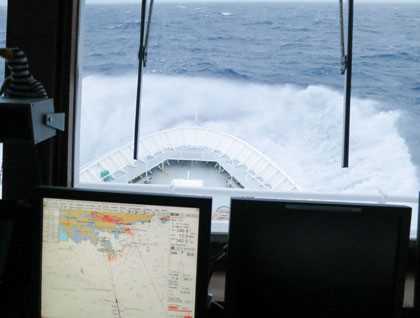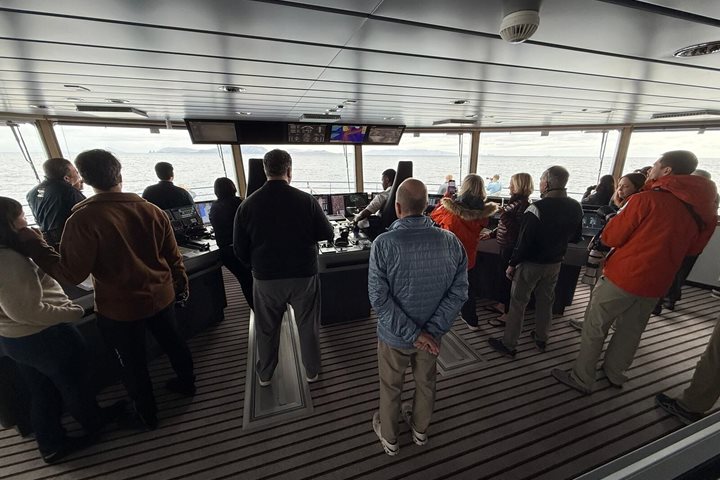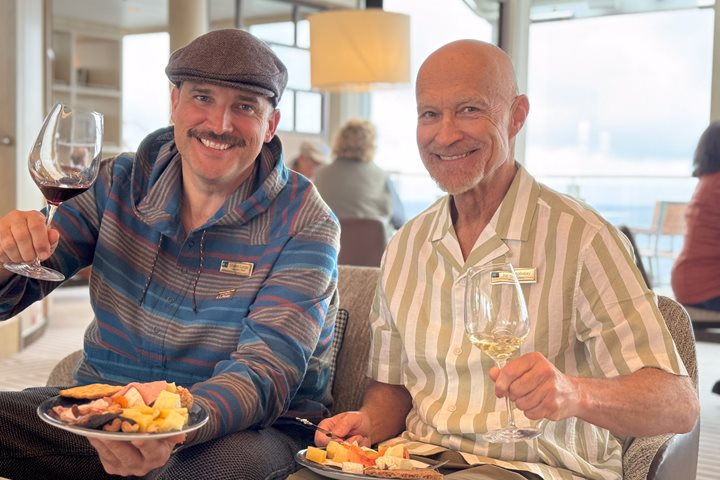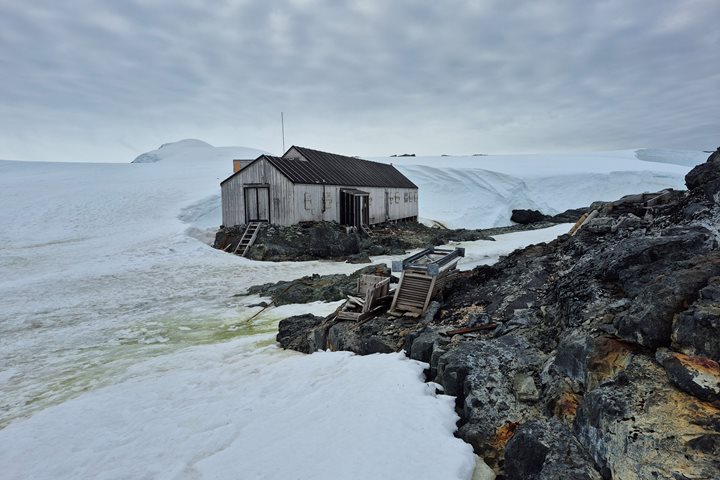Early in the morning, still nearly 50 miles out as the sky lightened, one could spot many species of seabirds soaring over top the windblown swells. With occasional swells breaking over the ship’s bow as she pitched, we saw downward sooty shearwaters, black-browed albatross, and even the majestic giants of the winds, the wandering and southern royal albatross, make life out on this tormented body of water look like a walk in the park. To us it seems a terrible thing to be out in such conditions, but for these masters of the wind and sea it's just another day at the office. Perhaps the most amazing thing to witness is an albatross at home over the ocean, and even more incredible as in the case of the southern royal albatross, these birds have ranged here all the way from New Zealand. At 0530 we were sailing over 3000 meters of water and shortly before 0800 we had begun to reach the Continental shelf, a steep incline where ocean currents begin to swell upwards bringing with it the rich nutrients from below producing a very productive and predictable source of food for all marine life, which is why these birds are here.
Having spent nearly two full days crossing the Drake Passage with visions of the Antarctic and its icy other worldly landscapes still fresh in our minds the sight of land was a welcome sign for many. But not too long ago the sight of the fabled southernmost headlands of Chile were none too welcome for mariners of yesteryear. Kapp Hoorn, or Cabo Hornos, once stood between every sailing vessel hoping to reach one end of the southern ocean from the other, and with regular tempests sweeping across the Drake Passage this rocky promontory claimed hundreds of ships after they were blown in too close to change course to avoid being dashed into the unforgiving land. But this morning we would have a different outlook upon approaching Cape Horn, sailing in at 13 knots in a stiffening gale from the northwest, we could easily sail to within three nautical miles of the Cape. After viewing Cape Horn and getting great looks at the monument placed there to commemorate all the lost mariners, we turned National Geographic Explorer to an eastward heading and made our way to the Beagle Channel.
Life abounded as we sailed through the afternoon to reach the Beagle, and as we made our way north up its fetch the seas began to lay down as we tucked into the lee of Tierra del Fuego. All afternoon we would sail this beautiful stretch of water, the occasional albatross and perhaps even a dolphin or two would cross our paths as we headed to our home port of Ushuaia, Argentina. There our fine ship would come alongside and after a wonderful sendoff hosted by Captain Leif Skog and a delicious meal our guests and crew would have the chance to stroll on Terra Firma once again, another expedition to Antarctica complete.







